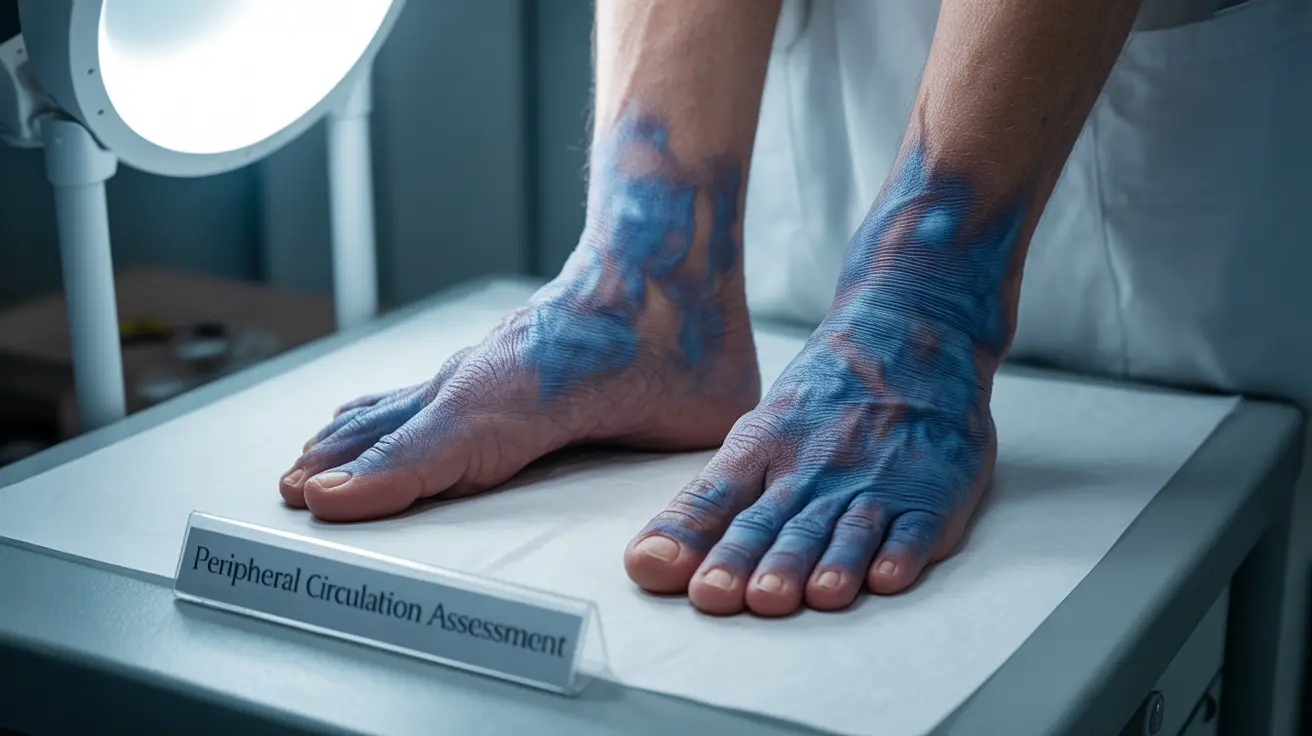Acrocyanosis is a condition characterized by the bluish discoloration of the extremities, particularly affecting the hands and feet. This circulatory condition occurs when small blood vessels in these areas constrict, leading to reduced blood flow and oxygen supply to the tissues. While it can be concerning to observe, understanding its nature, causes, and management options is crucial for those affected.
What is Acrocyanosis and How Does it Present?
Acrocyanosis manifests as a persistent blue or purple tint to the skin, typically affecting the hands, feet, and sometimes the face. The discoloration is often symmetrical, meaning it appears equally on both sides of the body. Along with the color changes, affected areas may feel cool to the touch and slightly swollen.
- Bluish or purplish skin coloration
- Symmetrical appearance on both sides
- Cold, clammy skin texture
- Possible mild swelling
- Symptoms worsen in cold temperatures
Primary vs. Secondary Acrocyanosis
Acrocyanosis can be classified into two main types, each with distinct characteristics and underlying causes:
Primary Acrocyanosis
Primary acrocyanosis is generally benign and occurs without an underlying medical condition. It's more common in:
- Young women
- People living in cold climates
- Individuals with low body mass
- Those with poor circulation
Secondary Acrocyanosis
Secondary acrocyanosis develops as a result of another medical condition or external factor. Potential causes include:
- Autoimmune disorders
- Blood disorders
- Eating disorders
- Certain medications
- Endocrine problems
Treatment and Management Strategies
While there's no cure for primary acrocyanosis, several management strategies can help alleviate symptoms:
Lifestyle Modifications
- Keep extremities warm with appropriate clothing
- Avoid sudden temperature changes
- Maintain regular physical activity to improve circulation
- Stop smoking if applicable
- Practice stress management techniques
Medical Interventions
For secondary acrocyanosis, treatment focuses on addressing the underlying condition. Your healthcare provider may recommend:
- Medications to improve circulation
- Treatment for any underlying medical conditions
- Regular monitoring of symptoms
- Lifestyle adjustments specific to your condition
When to Seek Medical Attention
While primary acrocyanosis is generally harmless, certain signs warrant medical evaluation:
- Sudden onset of symptoms
- Severe pain or ulceration
- One-sided symptoms
- Associated breathing difficulties
- Rapid progression of symptoms
Frequently Asked Questions
What are the main symptoms of acrocyanosis and how do I know if I have it?
The main symptoms include symmetrical bluish discoloration of hands and feet, cold and clammy skin, and possible mild swelling. These symptoms typically worsen in cold temperatures and improve with warming. A proper diagnosis should be made by a healthcare provider.
What causes acrocyanosis, and is there a difference between primary and secondary types?
Primary acrocyanosis is benign and often related to temperature sensitivity or poor circulation, while secondary acrocyanosis is caused by underlying medical conditions such as autoimmune disorders, blood conditions, or medications. The primary type is generally harmless, while secondary requires treatment of the underlying cause.
Is acrocyanosis dangerous, and when should I worry about the blue discoloration of my hands or feet?
Primary acrocyanosis is typically not dangerous. However, you should seek medical attention if symptoms are sudden, severe, one-sided, or accompanied by pain, ulceration, or breathing difficulties.
What are the best ways to manage or treat acrocyanosis at home, especially during cold weather?
Key management strategies include keeping extremities warm, avoiding sudden temperature changes, maintaining regular exercise, and wearing appropriate protective clothing in cold weather. Smoking cessation and stress management can also help improve symptoms.
Can acrocyanosis be a sign of another underlying health condition, and what tests might my doctor do?
Yes, secondary acrocyanosis can indicate underlying conditions. Your doctor may perform physical examinations, blood tests, vascular studies, or other diagnostic tests to determine the cause and appropriate treatment plan.




